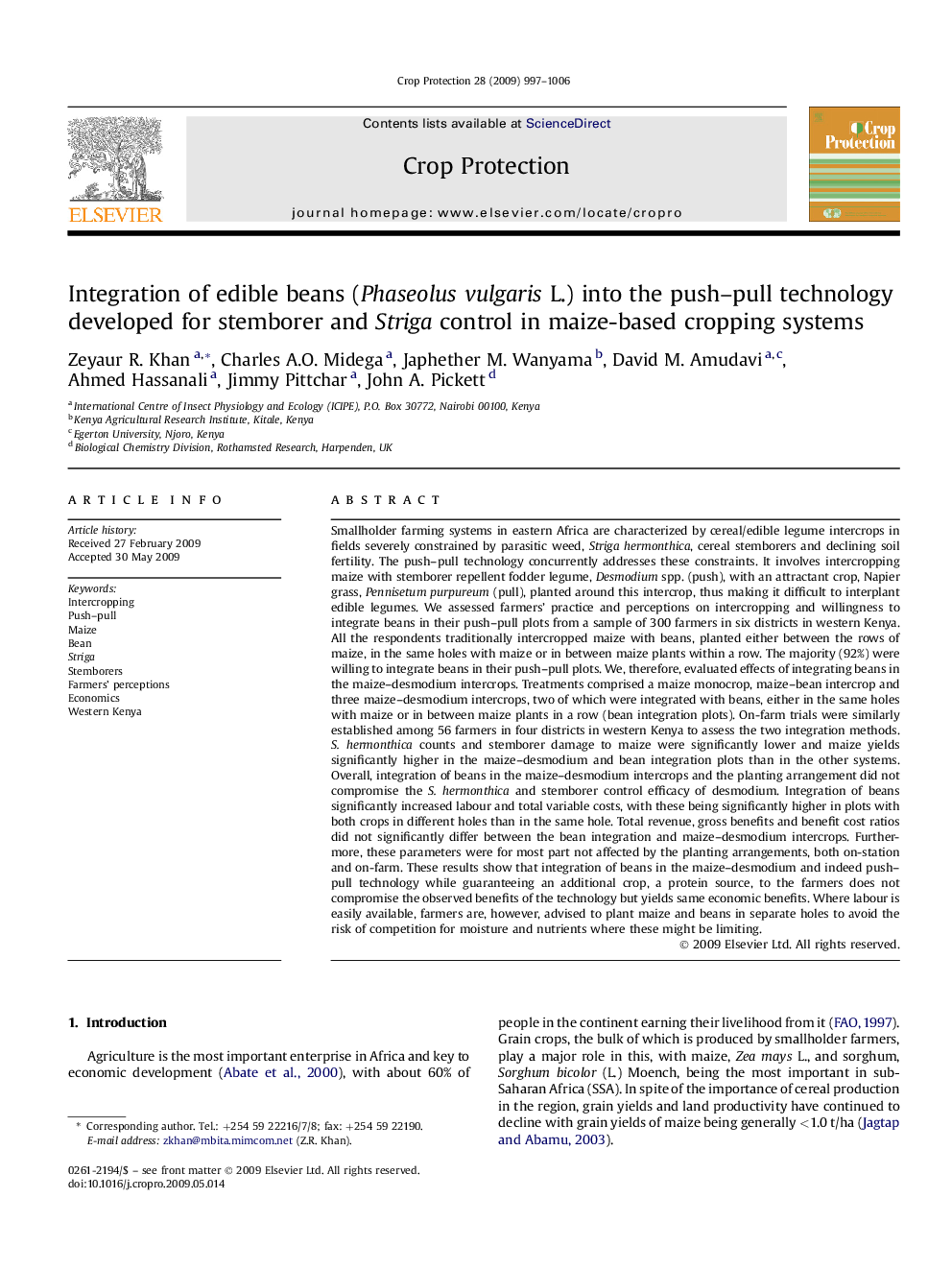| کد مقاله | کد نشریه | سال انتشار | مقاله انگلیسی | نسخه تمام متن |
|---|---|---|---|---|
| 4507351 | 1321351 | 2009 | 10 صفحه PDF | دانلود رایگان |

Smallholder farming systems in eastern Africa are characterized by cereal/edible legume intercrops in fields severely constrained by parasitic weed, Striga hermonthica, cereal stemborers and declining soil fertility. The push–pull technology concurrently addresses these constraints. It involves intercropping maize with stemborer repellent fodder legume, Desmodium spp. (push), with an attractant crop, Napier grass, Pennisetum purpureum (pull), planted around this intercrop, thus making it difficult to interplant edible legumes. We assessed farmers' practice and perceptions on intercropping and willingness to integrate beans in their push–pull plots from a sample of 300 farmers in six districts in western Kenya. All the respondents traditionally intercropped maize with beans, planted either between the rows of maize, in the same holes with maize or in between maize plants within a row. The majority (92%) were willing to integrate beans in their push–pull plots. We, therefore, evaluated effects of integrating beans in the maize–desmodium intercrops. Treatments comprised a maize monocrop, maize–bean intercrop and three maize–desmodium intercrops, two of which were integrated with beans, either in the same holes with maize or in between maize plants in a row (bean integration plots). On-farm trials were similarly established among 56 farmers in four districts in western Kenya to assess the two integration methods. S. hermonthica counts and stemborer damage to maize were significantly lower and maize yields significantly higher in the maize–desmodium and bean integration plots than in the other systems. Overall, integration of beans in the maize–desmodium intercrops and the planting arrangement did not compromise the S. hermonthica and stemborer control efficacy of desmodium. Integration of beans significantly increased labour and total variable costs, with these being significantly higher in plots with both crops in different holes than in the same hole. Total revenue, gross benefits and benefit cost ratios did not significantly differ between the bean integration and maize–desmodium intercrops. Furthermore, these parameters were for most part not affected by the planting arrangements, both on-station and on-farm. These results show that integration of beans in the maize–desmodium and indeed push–pull technology while guaranteeing an additional crop, a protein source, to the farmers does not compromise the observed benefits of the technology but yields same economic benefits. Where labour is easily available, farmers are, however, advised to plant maize and beans in separate holes to avoid the risk of competition for moisture and nutrients where these might be limiting.
Journal: Crop Protection - Volume 28, Issue 11, November 2009, Pages 997–1006